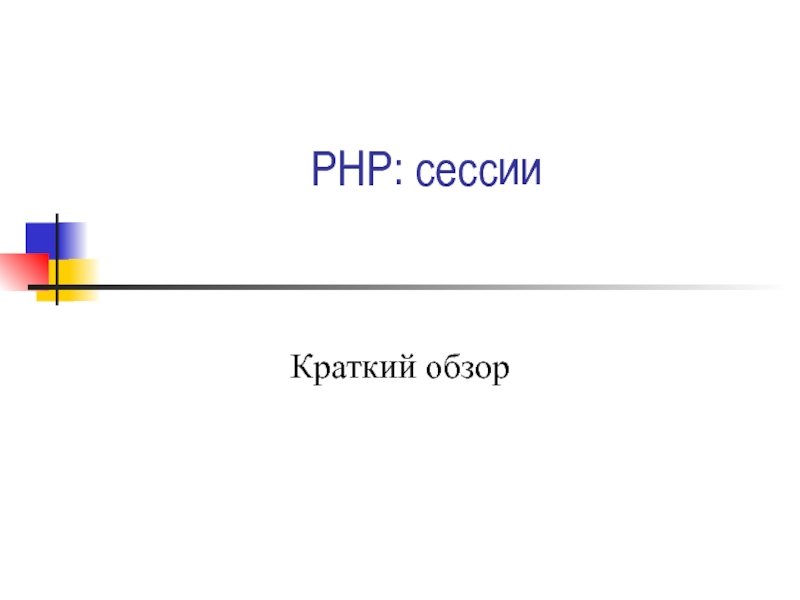- Главная
- Разное
- Дизайн
- Бизнес и предпринимательство
- Аналитика
- Образование
- Развлечения
- Красота и здоровье
- Финансы
- Государство
- Путешествия
- Спорт
- Недвижимость
- Армия
- Графика
- Культурология
- Еда и кулинария
- Лингвистика
- Английский язык
- Астрономия
- Алгебра
- Биология
- География
- Детские презентации
- Информатика
- История
- Литература
- Маркетинг
- Математика
- Медицина
- Менеджмент
- Музыка
- МХК
- Немецкий язык
- ОБЖ
- Обществознание
- Окружающий мир
- Педагогика
- Русский язык
- Технология
- Физика
- Философия
- Химия
- Шаблоны, картинки для презентаций
- Экология
- Экономика
- Юриспруденция
Quicksort презентация
Содержание
- 1. Quicksort
- 2. Quicksort I: Basic idea Pick some number
- 3. Quicksort II To sort a[left...right]: 1. if
- 4. Partitioning (Quicksort II) A key step in
- 5. Partitioning II Choose an array value (say,
- 6. Partitioning To partition a[left...right]: 1. Set pivot
- 7. Example of partitioning choose pivot: 4 3 6
- 8. The partition method (Java) static
- 9. The quicksort method (in Java) static void
- 10. Analysis of quicksort—best case Suppose each partition
- 11. Partitioning at various levels
- 12. Best case II We cut the
- 13. Worst case In the worst case, partitioning
- 14. Worst case partitioning
- 15. Worst case for quicksort In the worst
- 16. Typical case for quicksort If the array
- 17. Improving the interface We’ve defined the Quicksort
- 18. Tweaking Quicksort Almost anything you can try
- 19. Picking a better pivot Before, we picked
- 20. Median of three Obviously, it doesn’t make
- 21. Final comments Quicksort is the fastest known
- 22. The End
Слайд 2Quicksort I: Basic idea
Pick some number p from the array
Move all
numbers less than p to the beginning of the array
Move all numbers greater than (or equal to) p to the end of the array
Quicksort the numbers less than p
Quicksort the numbers greater than or equal to p
Move all numbers greater than (or equal to) p to the end of the array
Quicksort the numbers less than p
Quicksort the numbers greater than or equal to p
Слайд 3Quicksort II
To sort a[left...right]:
1. if left < right:
1.1. Partition a[left...right] such
that:
all a[left...p-1] are less than a[p], and
all a[p+1...right] are >= a[p]
1.2. Quicksort a[left...p-1]
1.3. Quicksort a[p+1...right]
2. Terminate
all a[left...p-1] are less than a[p], and
all a[p+1...right] are >= a[p]
1.2. Quicksort a[left...p-1]
1.3. Quicksort a[p+1...right]
2. Terminate
Слайд 4Partitioning (Quicksort II)
A key step in the Quicksort algorithm is partitioning
the array
We choose some (any) number p in the array to use as a pivot
We partition the array into three parts:
We choose some (any) number p in the array to use as a pivot
We partition the array into three parts:
Слайд 5Partitioning II
Choose an array value (say, the first) to use as
the pivot
Starting from the left end, find the first element that is greater than or equal to the pivot
Searching backward from the right end, find the first element that is less than the pivot
Interchange (swap) these two elements
Repeat, searching from where we left off, until done
Starting from the left end, find the first element that is greater than or equal to the pivot
Searching backward from the right end, find the first element that is less than the pivot
Interchange (swap) these two elements
Repeat, searching from where we left off, until done
Слайд 6Partitioning
To partition a[left...right]:
1. Set pivot = a[left], l = left +
1, r = right;
2. while l < r, do
2.1. while l < right & a[l] < pivot , set l = l + 1
2.2. while r > left & a[r] >= pivot , set r = r - 1
2.3. if l < r, swap a[l] and a[r]
3. Set a[left] = a[r], a[r] = pivot
4. Terminate
2. while l < r, do
2.1. while l < right & a[l] < pivot , set l = l + 1
2.2. while r > left & a[r] >= pivot , set r = r - 1
2.3. if l < r, swap a[l] and a[r]
3. Set a[left] = a[r], a[r] = pivot
4. Terminate
Слайд 7Example of partitioning
choose pivot: 4 3 6 9 2 4 3 1
2 1 8 9 3 5 6
search: 4 3 6 9 2 4 3 1 2 1 8 9 3 5 6
swap: 4 3 3 9 2 4 3 1 2 1 8 9 6 5 6
search: 4 3 3 9 2 4 3 1 2 1 8 9 6 5 6
swap: 4 3 3 1 2 4 3 1 2 9 8 9 6 5 6
search: 4 3 3 1 2 4 3 1 2 9 8 9 6 5 6
swap: 4 3 3 1 2 2 3 1 4 9 8 9 6 5 6
search: 4 3 3 1 2 2 3 1 4 9 8 9 6 5 6 (left > right)
swap with pivot: 1 3 3 1 2 2 3 4 4 9 8 9 6 5 6
search: 4 3 6 9 2 4 3 1 2 1 8 9 3 5 6
swap: 4 3 3 9 2 4 3 1 2 1 8 9 6 5 6
search: 4 3 3 9 2 4 3 1 2 1 8 9 6 5 6
swap: 4 3 3 1 2 4 3 1 2 9 8 9 6 5 6
search: 4 3 3 1 2 4 3 1 2 9 8 9 6 5 6
swap: 4 3 3 1 2 2 3 1 4 9 8 9 6 5 6
search: 4 3 3 1 2 2 3 1 4 9 8 9 6 5 6 (left > right)
swap with pivot: 1 3 3 1 2 2 3 4 4 9 8 9 6 5 6
Слайд 8The partition method (Java)
static int partition(int[] a, int left,
int right) {
int p = a[left], l = left + 1, r = right;
while (l < r) {
while (l < right && a[l] < p) l++;
while (r > left && a[r] >= p) r--;
if (l < r) {
int temp = a[l]; a[l] = a[r]; a[r] = temp;
}
}
a[left] = a[r];
a[r] = p;
return r;
}
int p = a[left], l = left + 1, r = right;
while (l < r) {
while (l < right && a[l] < p) l++;
while (r > left && a[r] >= p) r--;
if (l < r) {
int temp = a[l]; a[l] = a[r]; a[r] = temp;
}
}
a[left] = a[r];
a[r] = p;
return r;
}
Слайд 9The quicksort method (in Java)
static void quicksort(int[] array, int left, int
right) {
if (left < right) {
int p = partition(array, left, right);
quicksort(array, left, p - 1);
quicksort(array, p + 1, right);
}
}
Слайд 10Analysis of quicksort—best case
Suppose each partition operation divides the array almost
exactly in half
Then the depth of the recursion in log2n
Because that’s how many times we can halve n
However, there are many recursions!
How can we figure this out?
We note that
Each partition is linear over its subarray
All the partitions at one level cover the array
Then the depth of the recursion in log2n
Because that’s how many times we can halve n
However, there are many recursions!
How can we figure this out?
We note that
Each partition is linear over its subarray
All the partitions at one level cover the array
Слайд 12Best case II
We cut the array size in half each
time
So the depth of the recursion in log2n
At each level of the recursion, all the partitions at that level do work that is linear in n
O(log2n) * O(n) = O(n log2n)
Hence in the average case, quicksort has time complexity O(n log2n)
What about the worst case?
So the depth of the recursion in log2n
At each level of the recursion, all the partitions at that level do work that is linear in n
O(log2n) * O(n) = O(n log2n)
Hence in the average case, quicksort has time complexity O(n log2n)
What about the worst case?
Слайд 13Worst case
In the worst case, partitioning always divides the size n
array into these three parts:
A length one part, containing the pivot itself
A length zero part, and
A length n-1 part, containing everything else
We don’t recur on the zero-length part
Recurring on the length n-1 part requires (in the worst case) recurring to depth n-1
A length one part, containing the pivot itself
A length zero part, and
A length n-1 part, containing everything else
We don’t recur on the zero-length part
Recurring on the length n-1 part requires (in the worst case) recurring to depth n-1
Слайд 15Worst case for quicksort
In the worst case, recursion may be n
levels deep (for an array of size n)
But the partitioning work done at each level is still n
O(n) * O(n) = O(n2)
So worst case for Quicksort is O(n2)
When does this happen?
There are many arrangements that could make this happen
Here are two common cases:
When the array is already sorted
When the array is inversely sorted (sorted in the opposite order)
But the partitioning work done at each level is still n
O(n) * O(n) = O(n2)
So worst case for Quicksort is O(n2)
When does this happen?
There are many arrangements that could make this happen
Here are two common cases:
When the array is already sorted
When the array is inversely sorted (sorted in the opposite order)
Слайд 16Typical case for quicksort
If the array is sorted to begin with,
Quicksort is terrible: O(n2)
It is possible to construct other bad cases
However, Quicksort is usually O(n log2n)
The constants are so good that Quicksort is generally the fastest algorithm known
Most real-world sorting is done by Quicksort
It is possible to construct other bad cases
However, Quicksort is usually O(n log2n)
The constants are so good that Quicksort is generally the fastest algorithm known
Most real-world sorting is done by Quicksort
Слайд 17Improving the interface
We’ve defined the Quicksort method as
static void quicksort(int[]
array, int left, int right) { … }
So we would have to call it as quicksort(myArray, 0, myArray.length)
That’s ugly!
Solution: static void quicksort(int[] array) { quicksort(array, 0, array.length); }
Now we can make the original (3-argument) version private
So we would have to call it as quicksort(myArray, 0, myArray.length)
That’s ugly!
Solution: static void quicksort(int[] array) { quicksort(array, 0, array.length); }
Now we can make the original (3-argument) version private
Слайд 18Tweaking Quicksort
Almost anything you can try to “improve” Quicksort will actually
slow it down
One good tweak is to switch to a different sorting method when the subarrays get small (say, 10 or 12)
Quicksort has too much overhead for small array sizes
For large arrays, it might be a good idea to check beforehand if the array is already sorted
But there is a better tweak than this
One good tweak is to switch to a different sorting method when the subarrays get small (say, 10 or 12)
Quicksort has too much overhead for small array sizes
For large arrays, it might be a good idea to check beforehand if the array is already sorted
But there is a better tweak than this
Слайд 19Picking a better pivot
Before, we picked the first element of the
subarray to use as a pivot
If the array is already sorted, this results in O(n2) behavior
It’s no better if we pick the last element
We could do an optimal quicksort (guaranteed O(n log n)) if we always picked a pivot value that exactly cuts the array in half
Such a value is called a median: half of the values in the array are larger, half are smaller
The easiest way to find the median is to sort the array and pick the value in the middle (!)
If the array is already sorted, this results in O(n2) behavior
It’s no better if we pick the last element
We could do an optimal quicksort (guaranteed O(n log n)) if we always picked a pivot value that exactly cuts the array in half
Such a value is called a median: half of the values in the array are larger, half are smaller
The easiest way to find the median is to sort the array and pick the value in the middle (!)
Слайд 20Median of three
Obviously, it doesn’t make sense to sort the array
in order to find the median to use as a pivot
Instead, compare just three elements of our (sub)array—the first, the last, and the middle
Take the median (middle value) of these three as pivot
It’s possible (but not easy) to construct cases which will make this technique O(n2)
Suppose we rearrange (sort) these three numbers so that the smallest is in the first position, the largest in the last position, and the other in the middle
This lets us simplify and speed up the partition loop
Instead, compare just three elements of our (sub)array—the first, the last, and the middle
Take the median (middle value) of these three as pivot
It’s possible (but not easy) to construct cases which will make this technique O(n2)
Suppose we rearrange (sort) these three numbers so that the smallest is in the first position, the largest in the last position, and the other in the middle
This lets us simplify and speed up the partition loop
Слайд 21Final comments
Quicksort is the fastest known sorting algorithm
For optimum efficiency, the
pivot must be chosen carefully
“Median of three” is a good technique for choosing the pivot
However, no matter what you do, there will be some cases where Quicksort runs in O(n2) time
“Median of three” is a good technique for choosing the pivot
However, no matter what you do, there will be some cases where Quicksort runs in O(n2) time


![Quicksort IITo sort a[left...right]:1. if left < right:1.1. Partition a[left...right] such that: all a[left...p-1] are](/img/tmb/3/228898/20108e686c4290c5f652e14d69228af2-800x.jpg)


![PartitioningTo partition a[left...right]:1. Set pivot = a[left], l = left + 1, r = right;2.](/img/tmb/3/228898/ea5cbb96063b523c20508dc1901e6bb2-800x.jpg)

![The partition method (Java) static int partition(int[] a, int left, int right) { int](/img/tmb/3/228898/6cc492046f01cf3f62512ff87a7fd71b-800x.jpg)
![The quicksort method (in Java)static void quicksort(int[] array, int left, int right) { if](/img/tmb/3/228898/afa30d8e9c9031e04fbf43e0049a96b4-800x.jpg)







![Improving the interfaceWe’ve defined the Quicksort method as static void quicksort(int[] array, int left, int](/img/tmb/3/228898/8d89999e7eb2fdbd47308105e755c2b0-800x.jpg)










